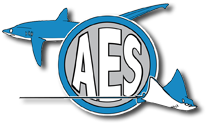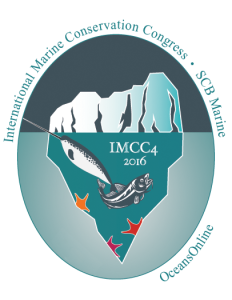Below is a Storify of curated tweets from Shark Week 2016 shows, including fact-checking, commentary, praise, and criticism. Enjoy!
Author: David Shiffman
Below are all of my Shark Week 2016 episode reviews from my Facebook page.
After a week of teasers, the Bimini Biological Field Station (“Shark Lab”) has finally unveiled the secret of #SharkDocSharkLab. It’s a book written by Sonny “Doc” Gruber, the founder of Shark Lab (and the first President of the American Elasmobranch Society, and an overall legendary figure in the world of shark research)! “Shark Doc, Shark Lab” … Read More “New book by Doc Gruber raises money for shark research” »
On January 1, 2016, the Southern Fried Science central server began uploading blog posts apparently circa 2041. Due to a related corruption of the contemporary database, we are, at this time, unable to remove these Field Notes from the Future or prevent the uploading of additional posts. Please enjoy this glimpse into the ocean future while we attempt to rectify the situation.
Over Christmas, I finally got to tour the Ram Myers Center for Ocean Biodiversity Restoration captive breeding facility. The millions of gallons of saltwater tanks and the state of the art husbandry and genetics labs look like something out of Jurassic Park. The building itself is almost as impressive as the list of heavy-hitters who work for or consult with the Center, and they’ve had undeniable success with temperature-resistant reef-building corals and pH resistant shellfish and phytoplankton that can survive in our increasingly warm and acidified seas.
I was there to investigate their recently-announced efforts to de-extinct smalltooth sawfish by releasing captive-bred animals into the Everglades and the Bahamas. Once found as north as New York and as west as Texas, habitat destruction and bycatch caused these amazing animals’ range to shrink to one small part of South Florida by the late 1990’s. In the early 2000’s they became the first elasmobranch to be listed on the U.S. Endangered Species Act, and in 2027, they were sadly declared extinct in the wild. In the interest of transparency, I should say that I started my tour skeptical of the Center’s plans to de-extinct smalltooth sawfish, and my opinion remains the same after further investigation.
Read More “Skeptical David is skeptical of new efforts to de-extinct the smalltooth sawfish” »
On January 1, 2016, the Southern Fried Science central server began uploading blog posts apparently circa 2041. Due to a related corruption of the contemporary database, we are, at this time, unable to remove these Field Notes from the Future or prevent the uploading of additional posts. Please enjoy this glimpse into the ocean future while we attempt to rectify the situation.
Yesterday, tens of thousands of people’s avatars teleported into the lobby of the National Marine Fisheries Service headquarters in Plaza. Most avatars wore a temporary skin that made them appear to be fish, marine mammals, sea turtles, or sharks. Almost all of them of them carried signs protesting the newly-announced shark fishing quota , which greatly increases total allowable catch for scalloped hammerhead sharks. This was the latest remote protest effort organized by the new, but undeniably augemented reality- and media-savvy, Ocean Conservation Solutions , which also designed all of the custom avatar skins.
Last summer, I predicted that this change to the quota would come. There’s no doubt that scalloped hammerhead sharks have greatly increased in population in the decades since they became the first shark species listed on the U.S. Endangered Species Act (as regular readers now, there are now 18 shark species and 43 batoid species on listed under the ESA). Despite concerns raised by conservationists (including myself), it seems that NMFS’ plan to allow a low-level of fisheries exploitation for hammerheads did indeed allow for overfished populations to rebuild. The newly reauthorized Magnuson-Stevens Fisheries Conservation Act, just like every previous iteration, requires that NMFS allow fisheries for any species whose populations can support them.
Read More “Remote Protests are visually impressive, but not as effective as public comments” »

This summer, the American Elasmobranch Society announced a new diversity initiative.We were thrilled to receive over 100 applicants to our Young Professional Recruitment Fund! Of these:
- 67% were female
- 64% were not citizens of the United States, and citizens from 30 countries applied
- 33% were from an ethnicity other than white/Caucasian, with a plurality (15%) of Hispanic/Latino descent
- 26% are the first in their family to get a higher education
We were able to award the scholarship, which covers the cost of a one year Society membership in addition to providing specialized mentorship, networking, and professional development training, to 31 applicants!
Our awardees come from all over the world, and specialize (or are training to specialize) in a variety of research techniques. In the coming weeks, we will begin professional development, mentorship and networking discussions on the AES website forums and Facebook page. All members of the Society are welcome to participate in these discussions and training sessions (though some will be specific to the unique needs of underrepresented minorities in the sciences), and all are encouraged to welcome our new members and answer their questions when possible. Below, we’ve included a photo of each awardee as well as a section of their application essay.
Read More “Meet the Elasmobranch Society diversity scholarship winners” »
I’m quite selective about what journalists/ publication I’ll agree to an interview with, as well as what topics I’ll agree to speak about. I turn down ten or so interviews for every one that I agree to give, though I will often recommend alternative experts for journalists to interview.
First and foremost, if I don’t have time, I won’t do a media interview. My primary job is to focus on my Ph.D. research so I can finish and graduate. If it means helping a friend or taking advantage of an amazing opportunity for exposure, I may be able to reshuffle around some time, but that’s only for exceptional circumstances. Similarly, I’ll generally only do interviews before or after work, while I’m in the car between campus and home, or during my lunch break, because my main job comes first.
Read More “How I decide whether or not to give an interview to a journalist” »
Every week on twitter (and every few weeks on my Facebook fan page,) I host a one hour “ask me anything” session. I also give lots of interviews to the press, and occasionally answer high school students’ questions about what my job is like for class projects. Some of the same questions tend to come up over and over. Here are some frequently asked questions and my answers to them. Feel free to quote anything on this page for a class project or media article and attribute it to me.
1. What is your job?
A: I am a Ph.D. candidate and research assistant at the University of Miami. “Candidate” vs. “student” means that I passed my qualifying exams, an important test for graduate students. Research assistant means that my funding comes from doing research and not teaching. Depending on my audience, I’ve also described myself as a marine biologist, a shark researcher, an ecologist, a conservation biologist, a science communicator, or simply a scientist.
Read More “Frequently asked questions about sharks (and about me)” »
 Next summer’s 4th International Marine Conservation Congress will include an optional full day add-on called OceansOnline. This add-on day, inspired by 2013’s successful ScienceOnline Oceans, will focus on how social media and other internet tools can help ocean scientists and conservation professionals with research, collaboration, and public outreach.
Next summer’s 4th International Marine Conservation Congress will include an optional full day add-on called OceansOnline. This add-on day, inspired by 2013’s successful ScienceOnline Oceans, will focus on how social media and other internet tools can help ocean scientists and conservation professionals with research, collaboration, and public outreach.
OceansOnline is suitable for total beginners who want to learn how to use these tools as well as advanced users who want to learn much more about their applications. Scientists and professionals who are advanced users of internet tools are encouraged to attend this meeting even if ocean conservation biology is not your primary research specialty.
OceansOnline will consist of three types of events: workshops, presentations, and facilitated discussions:
Read More “OceansOnline: How can internet tools help marine scientists and conservationists?” »
We have partnered with Dr. Paige Brown Jarreau, a science communication researcher, to create a survey of Southern Fried Science readers. By participating, you’ll help contribute to scientific understanding of blogs and blog readership. You’ll also get some free science art from Paige’s photography, as well as chances to win a t-shirt and other prizes. … Read More “Contribute to science communication research, take the Southern Fried Science reader survey!” »